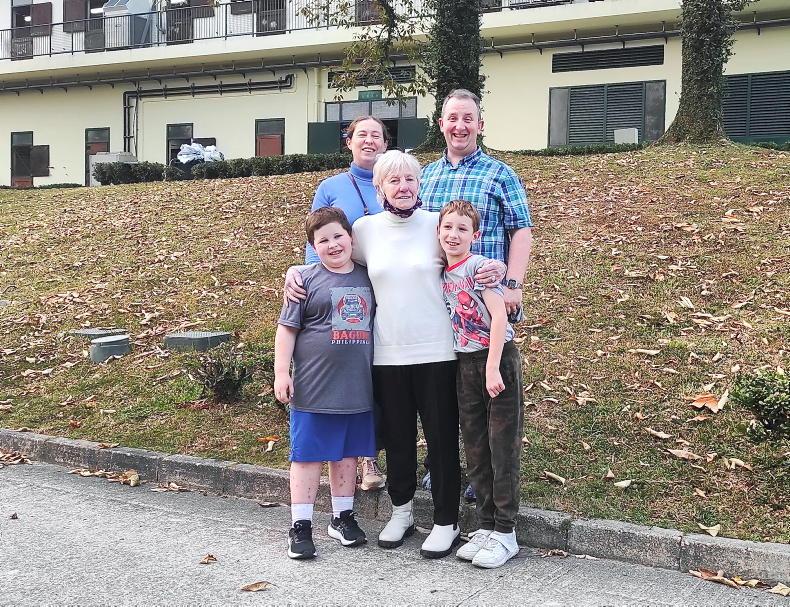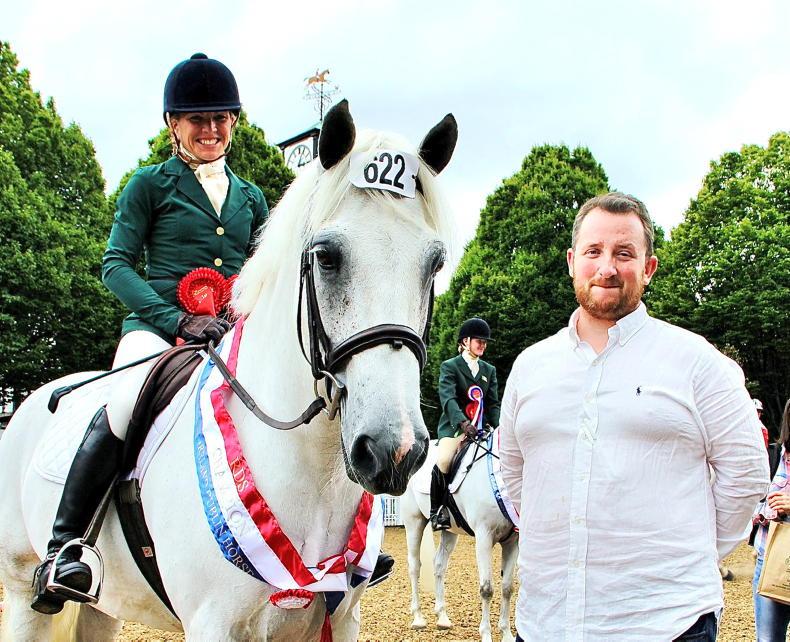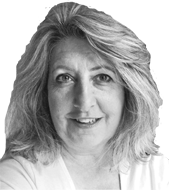TOMORROW ushers in the Chinese New Year. A new start in the Year of the Rabbit, (considered the luckiest of the 12 animals in the Chinese Zodiac), rings true for Alan Ward.
Perhaps his greatest stroke of luck, career-wise, was in not binning what he thought was a spam email received last springtime: a job offer in Hong Kong.
Headhunted by the Hong Kong Jockey Club, the Ballinasloe-born master saddler, wife Georgie and their two children Pierce and George moved 10,000 kilometres east last September.
Ward isn’t the first from Ballinasloe to rise to the challenge of a new job role in China. Previous Irish Horse World features have profiled master farrier Arthur Judge’s move to Beijing, while Cappa Stud’s Jimmy Quinn is involved in the design of an Irish equestrian-themed centre and village in Yueyang city.
Deciding to relocate for an initial two-year contract took a lot of thought, however the couple felt the pros of such a big move won out. “The whys of why we’re living in Hong Kong now are many and varied. This is one of the safest places in the world to live. We’re a short plane ride to the Philippines, Japan, Thailand, Vietnam and many more. We can even drive to Macau.”
“This is a beautiful city and life in Hong Kong is varied and interesting, the street food alone makes it a must-stop for any self-respecting foodie!”
Another to sample Hong Kong cuisine and sights is his mother Honoria who flew over to spend Christmas with the family. Honoria is as much a part of the Saoirse Saddlery story - the business her son built up - as Alan himself. “She ran the business, did the books, even ‘minded the shop.’”
“The horse fair was always a big deal growing up in Ballinasloe. In our house, either we had horses going to the fair, or we were helping neighbours with theirs. The fair was a massive part of our year.”
Another Ballinasloe ‘institution’ was the late saddler Rory Kilduff’s shop on Main Street, where a young Alan, fascinated by Connacht’s last remaining harnessmaker’s work, often found himself watching on.
“Why did I decide to become a saddler? When I was 10 years old, I was asked by a teacher what I wanted to do when you grow up. And I said, ‘I want to make things for horses.’”
“I don’t know why I set off in that direction but that’s as plainly as I remember it. I always had a fascination with saddles. Like, we can see in a really nice dressage or side-saddle that it’s a work of art but then it has to interact with 700 kilos of moving, striding horse and 60, 70, 80 kilos on top with the rider.”
“It has to fit the horse and be comfortable for the rider, so that just fascinated me: that you could take a hide of leather and with a knife, thread and needles, turn it into something that looks like art.”

Holiday snap: Alan with his family - Georgie, George, Honoria and Pierce - at the unique double-decker stables at Beas River during Honoria’s Christmas visit to Hong Kong
Circus comes to town
Hermès, the French fashion label, is another inspiration. “If you look at their logo, it’s Hermès Sellier. So they were saddlers before they became an international fashion brand.”
“I went through Garbally College but I was not academic. I’d say to Rory, ‘I want to do what you do.’ That I’d work for nothing if he’d just teach me. I was hounding him! In the end, he took me aside and said, ‘I started in the 1940s, our busiest year was 1956. Making harness, that was my forté but you won’t make a living out of it.’ He was very sorry but he wouldn’t take me on.”
“So when I finished my Leaving Certificate, I had two options: a two-year course in Electronics or a two-year diploma in Equestrian Studies & Business in Enniskillen. I chose the latter.”
The dream of becoming a saddler never waned though during Alan’s time at the College of Agriculture, Food and Rural Enterprise (CAFRE) in Co Fermanagh.
“Again, this was before the internet and Google so if you wanted to know about a job or profession, you went down to the labour exchange, you looked in newspapers or magazines so it was really, really difficult. I came across somebody in the local labour exchange who said there was a saddlery course in London’s Cordwainers College but it had a seven-year waiting list.”
“So I took the address and wrote a letter, saying exactly what I’ve just said: I had this fascination all my life to become a saddler and that if they could bump me up the waiting list, I’d work as hard as I could and get my qualifications.”
“A couple of months later, I got a letter asking if I was available to take a place.”
Having completed the three-year course, Alan returned home to Ballinasloe in early 1999 and set up Saoirse Saddlery.
“Lots of our work in the beginning was repairs, which was fine. It got people through the door. Then, because I’m classically trained, you did everything by hand as we weren’t taught how to use a sewing machine. So when people started to bring rugs to repair, I bought a sewing machine from Dubarry.”
Except the industrial sewing machine ran on three-phase power while the Ward home, like domestic households, had the standard single-phase system. “My poor mother, God bless her! I remember, as I was sitting at the sewing machine with no motor, she was literally turning the wheel by hand so I could stitch these horse rugs.”
Honoria’s eagerness to see her son’s business take off paid dividends when Alan had a caller to Saoirse Saddlery’s first official premises on Dunlo Street. “We were only open a wet week when one of the fellows from a three-ring American circus came in.”
That visit led to an order for harnesses for six Andulasian stallions. And two elephants.
Honoria swung into action, writing to RTÉ and The Connacht Tribune. “She said, ‘When’s the next time you’re going to have a homegrown story about making circus harness?’ and the media circus just snowballed from there with Nationwide and reporters arriving.”
“That’s when that photo was taken,” he said, referring to a photo I’d seen on ace historian Turtle Bunbury’s Facebook post of Alan’s reunion with Rory Kilduff for The Connacht Tribune visit.
“Rory just looked around the workshop at what I had made and said, ‘I wouldn’t be able to teach you all that.’ That day was a handing over of the torch, of sorts.”
Fit for business
His other role model, Thierry Hermès, had, with the advent of the motorcar, diversified into luggage and later fashion. Alan also expanded his business with saddle fitting.
By then, Saoirse Saddlery had moved to the former Grand Canal harbourmaster’s building, opposite the Shearwater Hotel.
“We stayed in Dunlo Street for three years. Then we moved and that really was the making of us because it was before the [M6] dual carriageway effectively bypassed the town. So for five years, we were on a very prominent corner. We even painted the name of the shop on the roof so you could see it for about half-a-mile beforehand.”
“It wasn’t any genius marketing on my part, just the only way we could put a sign up!”
With no mainstream saddle fitting business in the region, Alan set off in his van “and my little stack of flyers” to build one up. “If someone had an issue with a saddle, it made much more sense for me to just pop in the van and drive to the yard. It’s like if you have a sick horse, you don’t want to travel that sick horse. And people are busy.”
“There wasn’t a huge amount of research on whether your saddle fitted, apart from what you were taught in the Pony Club manual. So I became qualified in saddle fitting and realised how dynamic an area of expertise it is.”
“Horses change seasonally, horses change with age and once I started arranging saddle fits and annual follow-ups, owners had a lot less problems and less need for veterinary and chiropractor intervention.”
As more customers started to avail of the service, Cupid struck. “Not long after I started, I’d called to Knockdoe Riding School, just outside Galway where Billy Spain ran a very successful livery and riding school.”
“I’d done some repairs and when I went to leave, realised I’d locked my keys in the van. Billy told me, ‘My daughter Georgia is down in the yard, she’ll see if she can find you some tools.’”
“So that was the first time I ever met Georgie when she helped me break into my van!”
Packing up
The couple were married in 2007 and moved into their new home in 2012, the same year as Pierce was born.
“In 2015, his brother George was born. Three years later, Georgie fell in love all over again with Sylvester, a skinny ex-racehorse with bad feet and a kind eye. Georgie did as only Georgie can do; poured love into that horse for four years until she turned him into a gleaming, proud dressage star.”
Then along came the lucky break in that oh-so-nearly-deleted email.
“I got an email from the Hong Kong Jockey Club in April 2022. They needed a master saddler and my initial reaction was ‘How did this get through?’ And I was just going to erase it but, for whatever reason, I didn’t.”
“We started a dialogue and after a couple of months, I was satisfied it was bona fide.
“I met Amanda Bond, the HKJC Head of Equestrian Affairs, in Birmingham and we were to have a meeting for 30, 40 minutes. The meeting lasted nearly four hours, she was so gracious with her time,” he added about the former CEO of British Dressage.
“Amanda told me what the Jockey Club represented, their goals and mission statement. And when I went out to Hong Kong in June for three weeks for an extended interview and had seen the facilities, I realised this was an opportunity not to be missed. Delightfully, before I came home, they offered me a contract.”
Uprooting to the other side of the world with a young family was a major step. “Moving to a different culture, country, climate and career .. well, it’s daunting at any stage.”
“Because of Georgie, I never once had to think about anything other than focusing on my career. After 15 years of supporting and encouraging me, yet again, she put me first and without pausing for breath when I asked her about the move here, said yes.”
“She rehomed Sylvester, our two dogs, closed up the stand she established during lockdown selling free range eggs, homemade preserves, marmalade - oh, the marmalade! - organised the leasing of our home. She packed up our home and our life.”
Life in Hong Kong
The Ward family arrived in Hong Kong last September. “So the initial contract is two years.”
What does a typical day at Beas River, near the site of where the Hong Kong Olympics equestrian medals were decided, entail?
“It gets bright around six o’clock in the morning, I’ll put the kettle on and make coffee for myself and George, get the boys ready for school. I’ll walk them to the gate of Beas River and they either walk or cycle to school, it takes them 10, 15 minutes if they walk.”
“I go to my workshop and office. I have two apprentices: Julia Cheung and Michael Chau and we’re tasked with overseeing the 290 horses on-site. We also look after horses from three other riding establishments, then there’s a couple of private riding clubs.
“We help with the retraining of racehorses, they come here to have their retraining done by eight riders before they go on to a new life, say, private livery. If they show a very high level of talent they will go towards a pool of horse for professional riders and the Hong Kong team.”
“We check the schedule and work on saddlery adjustments or whatever else the horses might need. When the horses come off the racecourse, they need one kind of saddle, which needs to be adjusted as their frame changes. I just have to go downstairs from my office to see the vets, pull up a chair and discuss a horse’s notes.
“Hong Kong Jockey Club and I share the same vision when talking about the equestrian community and horse welfare. Their focus on the welfare of the horse is holistic.”
“From racing days all the way to their retired happy hacking days, the horse is at the centre of everything that we do here and our job is to really ensure the racehorses in our care are looked after to a world-class standard. The Hong Kong Jockey Club is a diverse, dynamic and innovative place to work.”
Work-life balance
Work-life balance has taken on a new impetus in post-lockdown, recessionary times. That balance has changed as much as a rehabbed racehorse’s outline for this Hong Kong ex-pat with a young family.
“My job is very different from running Saoirse Saddlery, when I was driving on average between eight and 12,000 kilometers per month, visiting yards and following up clients.”
“I loved it, love my clients but it was difficult with small children. When the children are that small, it’s very hard to keep saying, ‘Daddy is really sorry that he’s really tired or running late again.’ It just puts a strain on life.”
“So when this opportunity came up, there were two very big pluses. To walk to work - I haven’t driven anything much but a golf cart for the past five months! - and to never be late home.”
Best of all, there was Honoria’s Christmas visit.
“Mum came over for two weeks, we did a lot of the landmarks; the 10,000 Buddhas Monastery and Sky 100 at the Hong Kong Observation Deck where the lift takes you up 100 stories in 60 seconds!”
Dizzying heights but Alan Ward still has his feet firmly on the ground.


 This is a subscriber-only article
This is a subscriber-only article
 It looks like you're browsing in private mode
It looks like you're browsing in private mode






SHARING OPTIONS: